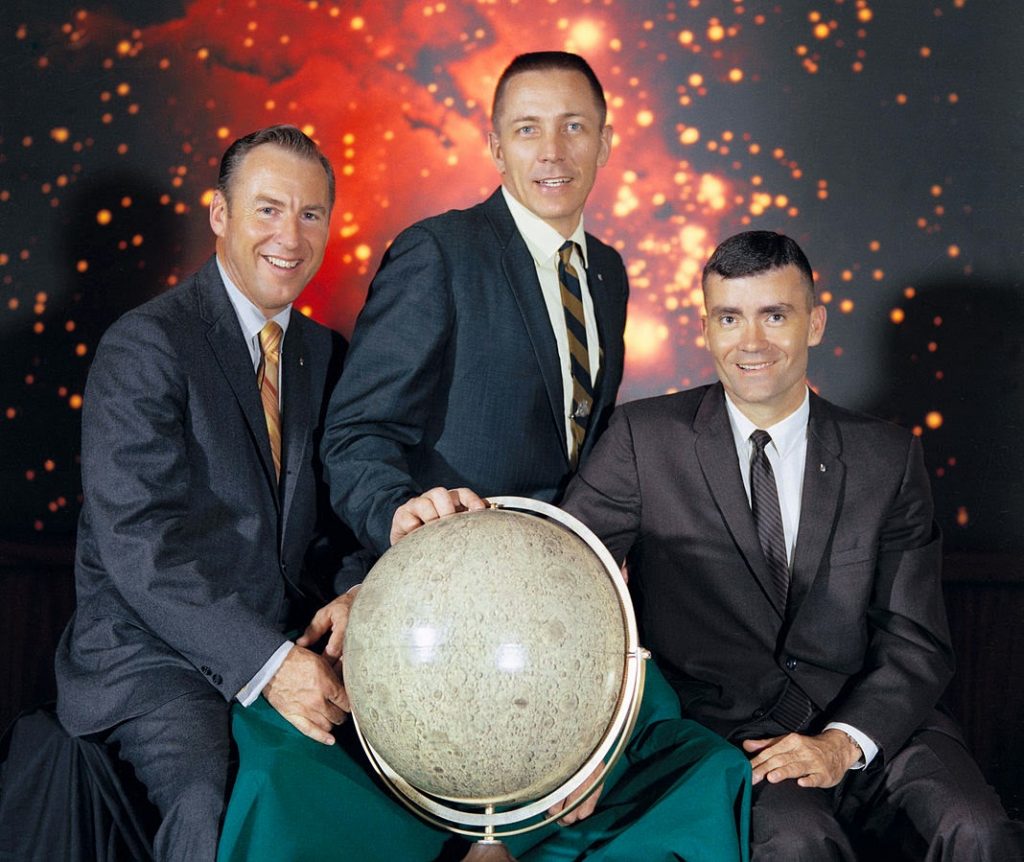The Apollo 13 lunar expedition suddenly turned into a survival mission when an explosion risked the lives of the crew, but turned out to be a successful failure. Before we examine the remarkable success accomplished by NASA, let’s travel back to the beginning of the mission. The main objective of Apollo 13 was to performed a lunar expedition. However, the crew encountered unexpected outcomes throughout the trip. The adventure of Apollo 13 lasted 143 hours and began on April 11, 1970, in Cape Kennedy, Florida. At 2:13 p.m., Apollo 13 was heading to the moon and its respective mission, when it experienced an explosion, then malfunctions, and subsequently doubts of ever making it back home alive.

During the first two days of the mission, the crew ran into minor surprises. But everything was looking as if Apollo 13 was the smoothest flight of NASA’s so far. A message came by Joe Kerwin, the capsule communicator, after 46 hours and 43 minutes, saying, “The spacecraft is in real good shape as far as we are concerned. We’re bored to tears down here.” That would be the last time somebody mentioned the word bored for a long time.1
At 55 hours and 46 minutes the crew finished a TV broadcast on how comfortable they were and that everything was fine in space. Nine minutes after the TV broadcast, a massive explosion occurred inside the spacecraft, causing a loss of electricity, light, and water. After the explosion, Apollo 13 was about 200,000 miles from Earth. The message was transmitted to Earth at 9:08 p.m., April 13, with the famous phrase, “Houston, we’ve had a problem.” James Lovell, the commander, told the ground that the main breaker was undervolted.2
The explosion left the crew in very bad shape, as they lost two of three fuel cells, which were the spacecraft’s prime source of electricity. Thirteen minutes after the explosion, Lovell saw through the window the final evidence of the catastrophe. “We are venting something out into the … into space,” Lovell reported to Houston. As Capcom Jack Lousma replied, “Roger, we copy you venting.” Lovell said, “It’s a gas of some sort.” The substance venting out was oxygen gas escaping at a high rate from the second and last oxygen tanks.3
An hour after the explosion, mission control sent a message, “we are now looking toward an alternative mission, swinging around the Moon and using the lunar module power systems because of the situation that has developed here this evening.” The crew was instructed to move to the lunar module, which would now be used as a lifeboat, and turn off completely the command module for re-entry. Meanwhile, the damaged Apollo 13 swung around the moon. The idea of landing on the moon was no longer an option for NASA. It was now a rescue mission.4
The crew and ground control were confronted with two problems to solve. First, getting the spacecraft and crew on the fastest route back home. Second, conserving consumables, power, oxygen, and water. The conservation of consumables began by shutting down the command module, which was only used as a bedroom. They also turned down all the systems in the lunar module, except for those required as life support, communication, and environmental control. For the first issue, after a great dealing of calculations and simulations at the Mission Control on Earth, they concluded that the Lunar Module’s engines could handle the requirements. Thus, the engines were fired to boost their speed another 860 fps, cutting the flight time by 10 hours.5

Finally, Apollo 13 rounded the Moon and began its journey back home. However, the problems were not entirely eradicated. The re-entry procedure required two more corrections. One was to align the spacecraft more towards the re-entry route. Moreover, the second issue was to fine tune the angle of entry, which had to be between the narrow range of 5.5 and 7.5 degrees. As the shuttle lacked power, the crew was forced to determine the altitude of the spacecraft manually. Normally the procedure would be routine; however, they experienced difficulties during the process, because the explosion had caused them to be surrounded with debris. Subsequently, they could not observe star sights, so the altitude of the shuttle became challenging to estimate. Mission control gave the answer to use the same strategy Apollo 8 used, in which the sun would be used as the alignment star.6
Just short of four hours before re-entry, Apollo 13 ejected the damaged Service Module. As the Service Module move away, Apollo 13 was able to see the damage. Two and a half hours before re-entry, Apollo 13 brought the command module back to life. As the system turned on, everyone aboard and at Mission Control, and around the world, had a sigh of relief. An hour later, the Lunar Module was also ejected. Mission control send a message, “Farewell, Aquarius, and we thank you.”6
The Apollo 13 Command Module carrying Jim Lovell, Fred Haise, and Jack Swigert, touch the Pacific Ocean on April 17, 1970 at 1:07 p.m. EST. Forty-five minutes later, USS Iwo Jima, recovery ship, came and brought the crew aboard. After 142 hours 54 minutes 41 seconds, Apollo 13 returned to Earth. The survival mission ended up being a successful failure, as nobody died and all came back to Earth alive from an almost impossible mission 200,000 miles from home.
- Office of Public Affairs, National Aeronautics and Space Administration, Apollo 13: “Houston we’ve got a problem,” Washington: Library Catalog, 1970. ↵
- Encyclopedia Britannica, s.v. “Apollo 13”, last modified September 7, 2017, https://www.britannica.com ↵
- Michael S. Rosenwald, “’Houston, we have a problem’: The amazing history of the iconic Apollo 13 misquote,” The Washington Post, April 2017, https://www.washingtonpost.com. ↵
- Nick Greene, “Apollo 13: A Mission in Trouble,” ThoughtCo., (2017). https://www.thoughtco.com. ↵
- Encyclopedia Britannica, s.v. “Apollo 13”, last modified September 7, 2017 https://www.britannica.com . ↵
- Nick Greene, “Apollo 13: A Mission in Trouble,” ThoughtCo., (2017). https://www.thoughtco.com. ↵
- Nick Greene, “Apollo 13: A Mission in Trouble,” ThoughtCo., (2017). https://www.thoughtco.com. ↵



65 comments
Maricela Guerra
I think the idea of space, and exploring the unknown is really scary. You never know what will happen, and the fact that you will be all alone with only the people that come with you. The training that must be processed is absolutely, I give them all props for being so brave and for being so calm and collected when situations happen.
Johnanthony Hernandez
Great article, I didn’t know much about the issues and dangers that the Apollo 13 crew experienced during their mission to space. I can’t imagine what was going through their minds when the crew experienced an explosion and malfunctions. It’s understandable that they may have thought that they wouldn’t make it back home when a series of events like they experienced began to happen. I can honestly say that I would have thought the same thing if I was in their position.
Timothy ODekirk
The incident of Apollo 13 is like something from a movie. I’m a fan of NASA and find space exploration extremely fascinating. However, space exploration is something that I honestly do not think we are ready for yet. At least not in the 70’s when we took space exploration way too fast. Space exploration is extremely dangerous and Apollo 13 has proven that. Fortunately, everyone aboard on the spacecraft of the mission survived and we will continue to embark on space exploration throughout the years.
Evian-loren Salgado
This was a very interesting article regarding Apollo 13. I knew a little bit about the Apollo 13 mission but nothing of great detail. I remember watching the movie in school. This article was very well written and provide lots of information on the Apollo 13 and its crew. I think its interesting how something can go wrong so quickly and suddenly it turned into a rescue mission. Overall I learned a lot reading this article.
Joshua Castro
I have always been interested in space travel and just exploring the vast unknown. As a child my dream was to become an astronaut to explore it myself because I knew how small we are compared to everything else around us. The Apollo 13 expedition displayed the dangers of exploring the mesmerizing vacuum of space, but also how keeping calm and collected can determine whether or not one survives. This article was thoroughly researched and there is no doubt about it.
Natalia Flores
I would be terrified in that sort of situation. Just imagine hearing that explosion, the lights going off, and then seeing a lot of debris around you. On top of that, the oxygen in the shuttle is flowing out at an alarming rate. Any normal, untrained person would immediately start freaking out. They are truly amazing for handling that situation so calmly and orderly.
Tyler Thompson
I liked the imagery and the space pun used in the first paragraph, it caught my attention for me to read more. I saw the movie and had a general idea of what happened, but reading it helped me understand all that had happened. It must have been the scariest moments of their life, knowing that they were loosing fuel cells, and running out of oxygen. Not to mention that everything that they did had to have been to the exact measurement in order to safely come back into orbit.
Jason Garcia
This article was very well researched, that is evident. The sequence of events was fast passed and made the story feel real. I can’t imagine the amount of fear that those men must have had but their training and quick wits from NASA allowed them to return home safely and make it into the history books. Before this article, I had no idea that the events on that day were actually as intense as they really were. Great article this was probably the best I’ve read on this site.
Yahaira Martinez
This article was very interesting to read and was so well written that I was nervous just by reading it. I had heard of the Apollo 13 mission but I never really knew much of the details about the mission itself. This article was very informative and managed to allow the reader to somewhat feel what these astronauts were feeling, from describing how far away they were from Earth and how fast their oxygen was running out, to the description of how much fuel they had left. The article was one of the best ive read.
Anais Del Rio
Every so often I hear Apollo 13 and I never exactly knew what happened until now. This gives a glimpse into how strong an astronaut should be not only physically but mentally. The astronauts were really at death’s door watching their oxygen release into space, it would have been impossible to stay calm. Thankfully they came back safe and sound and with vital information NASA can use to better future missions.